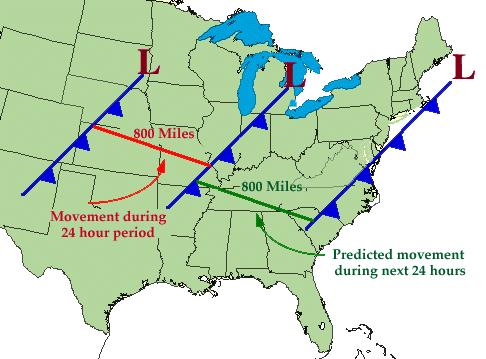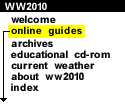
|

Statement of Purpose:
Trusting the Forecast is an Internet-based weather curriculum
for 9-12 grade students. This project gives students first hand experience
in weather forecasting and all the issues that a meteorologist must
consider when making a forecast.
Project Objectives:
Students should work in groups of 2-3 and
learn to access current and forecast weather data through
Internet resources. This data is used to make weather forecasts out to two
days and the accuracy of these forecasts is analyzed through
comparisons with observational data.
Meteorological phenomena and concepts students will be exposed to include: effects of cloud cover, snow cover and wind on forecasting temperatures, effects of cyclones and anticyclones on forecasting precipitation, the forecasting process, Coordinated Universal Time (UTC) and precipitation processes.
Project Overview:
This project requires up to 2-3 weeks of class time.
The curriculum begins with students using the
Weather
Visualizer to access current weather data. (For students not involved with
CoVis, a public-version of the
Weather Visualizer
is also available).
Students make a forecast for the next two days and in the two days that follow, record current observations to compare with their forecasts. Relevant scaffolding activities are available to teach students new skills and techniques to improve their forecasting abilities (hopefully). Each activity requires on average 90 minutes of class time.
Once the forecasting period is complete, students go back and analyze their predictions, determining accuracy of their forecasts and addressing possible reasons why they were wrong (if and when they were). Some questions that should be considered include; What type of weather conditions posed the most problems in forecasting? Did the forecasting accuracy improve over the time period as the students completed scaffolding activities?
Granted, students may figure out where to look up the National Weather Service forecasts, but these forecasts are often incorrect. These forecasts are made for large areas of the state, and are not always able to take into account local effects like, rivers, lakes and urban areas, which can have significant impacts on the local weather conditions. Students would have to consider local effects such as these. To provide students with an extra incentive to actually putting some thought into a forecast, there could be a contest among the students within the class, or even with students in other classes (or even other schools).
Prerequisites:
Students need to be comfortable using a web browser and accessing
weather data on the Internet.
Necessary meteorology resources are available to
students through direct links strategically inserted
into the curriculum pages.

introduction |
|

start up activity |




